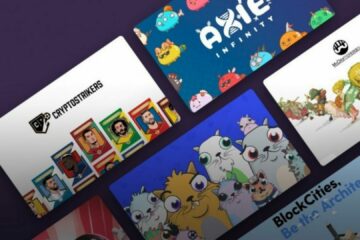The hype surrounding NFTs has not yet subsided. Digital works of art are still being sold for enormous sums of money. But even if you won’t earn millions (or at least thousands) of euros, it can be an interesting project to create a token yourself – for example because you want to try out the market as an artist.
This does not require extensive crypto knowledge – but a certain basic interest and an initial investment in a crypto currency are the prerequisites for creating an NFTS. We’ll tell you how to do it.
Create a crypto wallet if you don’t already have one for NFT
You should think about which blockchain you are using before creating an NFT – Ethereum is the most used for NFTs.
The wallet has to be charged because there are fees for creating and selling NFTs.
Choose a platform, e.g. OpenSea or Rarible. There you will be instructed in the creation of NFTs. In any case, a wallet must be linked.
Upload the work – picture, video, animation, audio file – in an accepted file format (e.g. png, gif, webp, mp4, mp3).
Define sales details: auction or fixed price, royalties (with each resale you receive a share of the sales price).
The NFT is now available for sale but is not tied to the platform on which it was created
First of all, the work of art that will become the NFT must be created. This can be a picture, an animation, a video or a sound file – everything that can be saved digitally. You should still be careful with the format. It is advisable to save the file as png, gif, mp4 or mp3 so that there are no problems later because the selected platform does not accept the format. In addition, it is important to ensure that you do not violate any rights – the graphics, the photo, the film or the song that you want to make the NFT must have been created by yourself.
So once you have created your work of art, you have to choose a blockchain through which it is offered. In the meantime, Ethereum, the blockchain of the ETH coin, has established itself as the most popular platform for NFTs. Of course, you can also look around for smaller ones, such as Flow from Dapper Labs. Canada’s blockchain is working with Google Cloud, according to Forbes, which could give it a big boost.
Every blockchain has its own standard for tokens and not all wallets are compatible with it. You can find a list of them on the respective website. If you don’t know your way around very well, there is little you can do wrong with Ethereum. The standard here is called ERC-721.
A token can be both fungible (exchangeable) and non-fungible (not exchangeable). Basically, “non-exchangeable” in this sense just means that it is a unique digital asset that cannot be exchanged one-for-one for another.
The situation is different with bitcoins, for example: Bitcoins can be exchanged as desired, as they always have the same value. It’s the same with cash: a ten-euro note has the same value as other ten-euro note.
Non-fungible tokens, on the other hand, can be compared to objects of art such as paintings. These have an individual value. If you swap them for one another, you usually don’t get the same value that you pass on.
In theory, any asset can be digitized and turned into an NFT: drawings, digital works of art, video clips or even real possessions. It is important that the NFTs contain information that proves their uniqueness. In this way, the respective owner can always be traced back and can assert his claim.
The question now, of course, is how do you protect a digital asset? Finally, you can save a copy of any digital work of art on your own PC with a simple right-click of the mouse.
How is ownership documented?
The scenario described above is true and NFT critics like to cite it, but the matter is a little more complex than initially assumed. Like cryptocurrencies, NFTs are based on a blockchain, i.e. a decentralized database.
Put simply, this is made up of information blocks that are strung together like the links in a chain. Each block in turn contains certain data as well as its own and the hash value of the previous block. The data that is stored in a block can include, for example, the transaction details of cryptocurrencies or NFTs: seller, buyer and the transaction amount.
The hash value can be thought of as an electronic fingerprint. It is always unique and is used to identify the respective block. Since each block also contains the hash value of its predecessor, a chain (blockchain) is created. This is based on a peer-to-peer network, i.e. a network of computers with equal rights, all of which have a complete copy of the blockchain. If a new information block is created, all computers in the network receive this information, compare it and then confirm the integration.
Should someone try to integrate a block with incorrect information into the blockchain, he would have to feed it into all copies of the same. Since this is almost impossible, the blockchain is an extremely secure variant of data storage.
A token can be both fungible (exchangeable) and non-fungible (not exchangeable). Basically, “non-exchangeable” in this sense just means that it is a unique digital asset that cannot be exchanged one-for-one for another.
The situation is different with bitcoins, for example: Bitcoins can be exchanged as desired, as they always have the same value. It’s the same with cash: a ten-euro note has the same value as other ten-euro note.
Non-fungible tokens, on the other hand, can be compared to objects of art such as paintings. These have an individual value. If you swap them for one another, you usually don’t get the same value that you pass on.
In theory, any asset can be digitized and turned into an NFT: drawings, digital works of art, video clips or even real possessions. It is important that the NFTs contain information that proves their uniqueness. In this way, the respective owner can always be traced back and can assert his claim.
The question now, of course, is how do you protect a digital asset? Finally, you can save a copy of any digital work of art on your own PC with a simple right-click of the mouse.
How is ownership documented?
The scenario described above is true and NFT critics like to cite it, but the matter is a little more complex than initially assumed. Like cryptocurrencies, NFTs are based on a blockchain, a decentralized database.



0 Comments